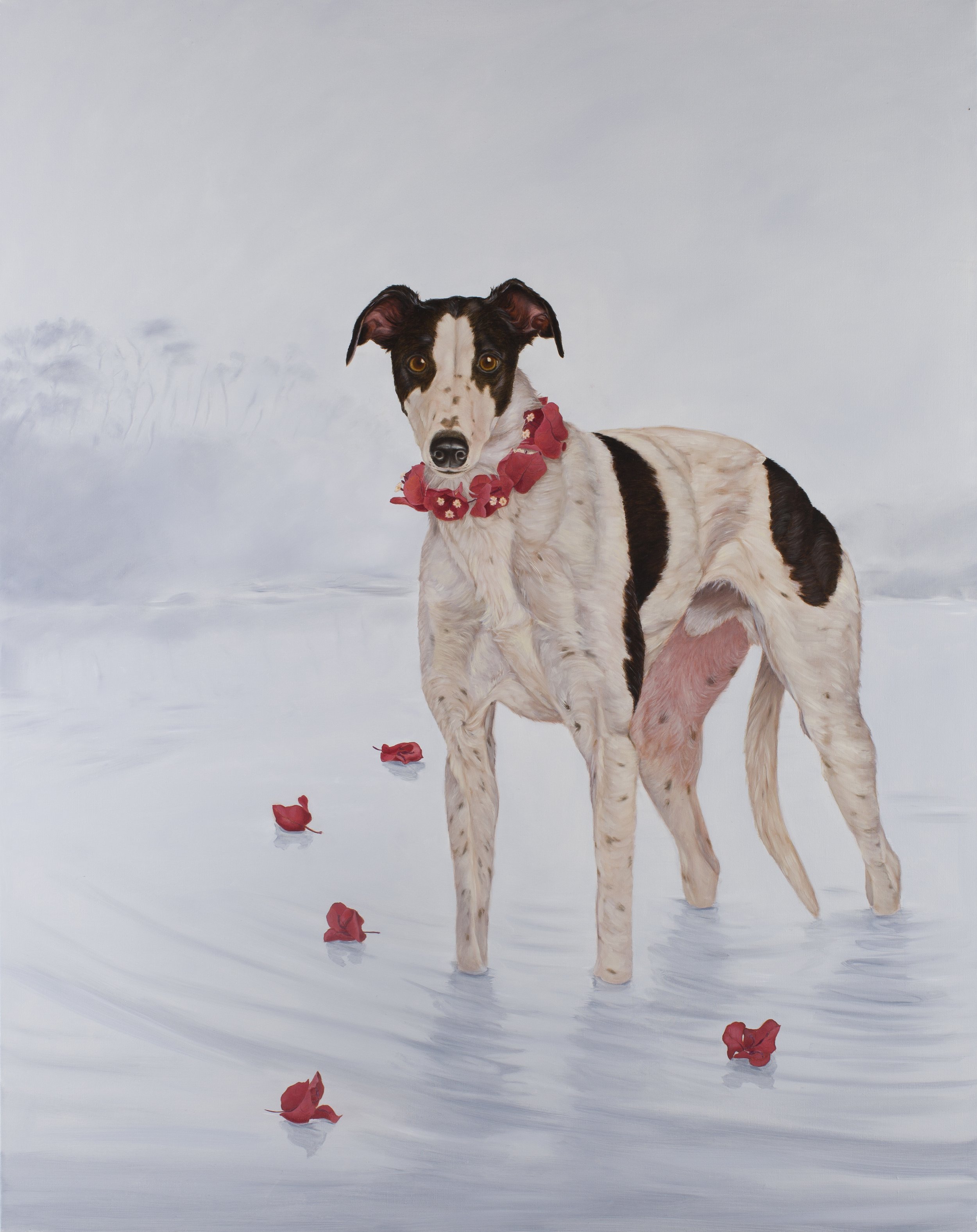UNSPOKEN
Unspoken brings us before a series of paintings of animals whose physicality is so lovingly rendered that one is called to pause and enter the intensely felt space of the artist.
Krieger’s technique, in which every muscle, hair and eyelash is delineated, has something of the precision of 19th century naturalism, but her gaze is not a documentary or scientific one. Rather the slow loving attention to detail brings the viewer to a state of emotional presence, in which the direct gaze of the greyhound or the vulnerable curl of the lamb’s body in the chair, merges with a human consciousness of past trauma, or maternal protectiveness, and the difficulty of expressing these states.
Krieger’s arrangements resist easy definition. Intuitively she brings together found and made objects to create a play of implications. In Hinterland, the baby deer leans towards the tiny mother deer (real or ornamental we cannot tell) reaching up from inside the lush terrarium, which is placed on a sawn log: behind the deer, a ghostly suggestion of trees that might have been. The log, like the bundle of bound branches in Wishing Tree and Bound Firmly, alludes to a human action having taken place at some point, perhaps clumsily. As the artist puts it, she is drawn to suggest that a human presence has passed through her imaginary worlds. The bundled and tied wood, carefully suspended above the fox and the wattlebird, might also denote protection, as do the birds that flutter about the crouching figure of a girl in Heart to Heart or landing on the antlers of the deer in The Guardian.
The atmospheric landscapes in which the animals appear evoke dream spaces, a metaphysical other - world conjured from somewhere beyond our consciousness, elsewhere from that which is tangible and known. Krieger is preoccupied with death as a metaphoric hinterland, composing her landscapes from mist and shadows, so that their dreamy softness might amplify the living brightness of the fox, bird or short-lived wreath of flowers.
The exception is the painting Sitting duck in which we see a duck shooter occupying the landscape, knee deep in a lake in his camo gear, with two dead birds tied onto his belt, their splendid plumage crumpled against the khaki fabric of his clothing. He is relaxed, gazing off into the distance. His stance is that of the top predator with nothing to fear, hand falling easily like an emblem of human frailty, but on his back is a small precise symbol of a target. This is not an object lesson on the morality of duck shooting, so much as a blurring together of the essential vulnerability of the shooter and the duck.
One way or another the viewer finds themselves bringing a hand over the heart, and feeling the weight and presence of all the untold stories within.
Sarah Tomasetti, 2016

Bound firmly, oil on linen, 97 x 122cm

Tread gently, oil on linen, 74 x 100cm

Heart to heart, oil on linen, 92 x 122cm

The Sacred cow, oil on linen, 107 x 122cm

Hinterland, oil on linen, 97 x 122cm

Keepsake, oil on linen, 92 x 122cm

Rebirth of a greyhound, oil on linen, 97 x 122cm

Recurring dream, oil on linen, 97 x 122cm

Duck!, oil on linen, 97 x 122cm

The guardian, oil on linen, 97 x 122cm

The matriarch, oil on linen, 74 x 100cm

Wishing tree, oil on linen, 97 x 122cm